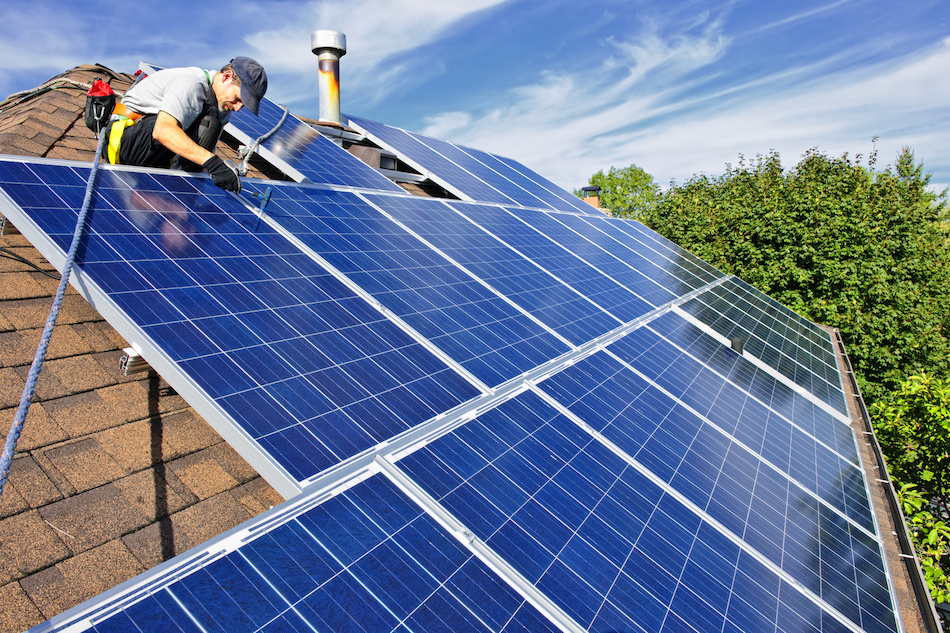 Due to recent price decreases, solar panels are finally becoming affordable for more homeowners. The benefits of going solar, besides raising the value of your luxury home, is just like other energy efficient upgrades — it reduces energy expenses and protects the environment—but what's less clear is the path to installing solar panels. Get tips on how to choose the right solar panel for your roof.
Due to recent price decreases, solar panels are finally becoming affordable for more homeowners. The benefits of going solar, besides raising the value of your luxury home, is just like other energy efficient upgrades — it reduces energy expenses and protects the environment—but what's less clear is the path to installing solar panels. Get tips on how to choose the right solar panel for your roof.
Calculate Energy Usage
The first place to turn when preparing for solar panels is utility bills. Gather one year of utility bills and add up all the energy used in terms of kWh, or kilowatt hours. If you've used 12,000 kWh—and the average U.S. household consumption is 11,000 kWh per year—then solar power needs to produce that much energy or greater to cover 100 percent of energy expenses.
Calculate Sun Exposure
Depending on the size of the roof, orientation of the home, and climate, solar panels on the roof may or may not generate sufficient electricity. For instance, California has the highest rate of solar production in the U.S. while Maine has the lowest due to typical amounts of sunny days in each state.
Thus a California roof with full sun exposure in a sunny climate will produce more solar energy than a home in Maine. Assuming both homes use the average of 11,000 kWh, the Maine house would need more solar panels than the California one since it receives less sun. Estimate sun exposure by address using PVWatts, a tool developed by the National Renewable Energy Laboratory.
Choose the Type of Solar Panel
Solar panels come in three main types: monocrystalline, polycrystalline, or thin-film solar cells.
Monocrystalline cells are the most expensive, but the most efficient. These panels perform well in low-light conditions and climates that get less sun. Because they're so efficient, home owners can produce more power with fewer of these panels. Many manufacturers offer 25-year warranties on these products.
Polycrystalline panels are less efficient than monocrystalline panels. They also cost less per panel, although homeowners will need more of them.
Thin-film solar cells may seem attractive due to their low cost, but they don't last a long time and they require a lot of space. For these reasons, they generally aren't recommended for roofs.
Get Quotes for Solar Installation
When homeowners understand the different variables that affect solar panel sizing and installation, they can easily compare quotes from installers and make decisions about what's best for them. For instance, if a home cannot support enough panels to produce 100 percent of the electricity needed, Lake Como homeowners who understand how it all works can then decide if they want to place additional panels on the front lawn or draw some power from the grid. However, not everyone has the time or inclination to make these calculations for their homes.
Solar panel installers can evaluate energy usage, measure roof space, and determine how many panels are needed. A reputable installer should also help find state and local incentives that lower the cost of going solar. Look for solar panel installers who are certified by NABCEP, the North American Board of Certified Energy Practitioners. Reach out to at least three companies to get quotes, then compare the terms of service.
Whether they cover only a portion or the entirety of energy consumption, solar panels save money and add value over the long run. After calculating the size of the system and selecting panels, homeowners can invest in solar with confidence, and begin to reap rewards right away.

Leave A Comment